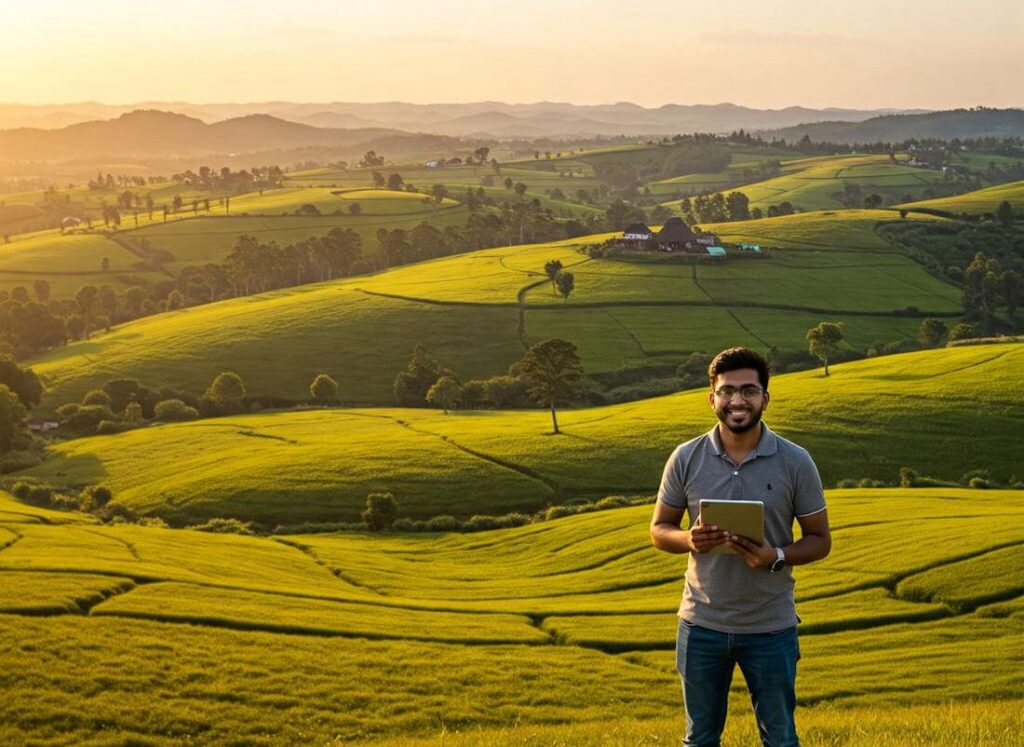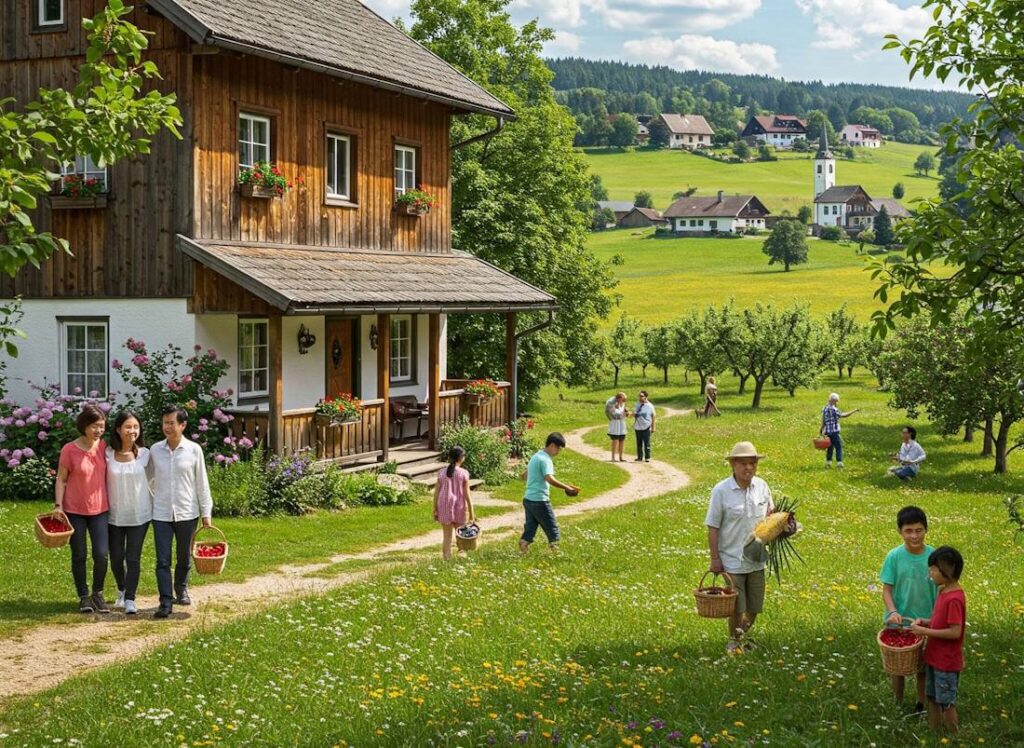Tourism has evolved significantly over the years, with distinct forms emerging to cater to diverse preferences and experiences. Rural and urban tourism are two primary categories that encompass the multitude of ways in which travelers engage with environments significantly different from their everyday surroundings. Urban tourism, which refers to travel to cities and built environments, has long been the dominant force in the tourism industry. It features attractions like iconic landmarks, cultural institutions, and vibrant nightlife, appealing to millions of tourists seeking both entertainment and a cosmopolitan experience.
In contrast, rural tourism focuses on exploring the countryside and nature-centered experiences. It allows travelers to engage with local cultures, landscapes, and agricultural practices, promoting a slower pace of life. Rural tourism offers activities such as hiking, farming experiences, and wildlife observation, which stand in stark contrast to the hustle and bustle found in urban locales. This form of tourism has gained momentum in recent years as more people seek respite from city life, searching for authentic connections with nature and local communities.
The Allure of the Countryside
Rural tourism has gained significant traction in recent years as travelers increasingly seek authentic experiences away from bustling urban centers. The captivating charm of the countryside lies in its abundant natural beauty, tranquil environments, and a sense of authenticity that draws individuals looking to escape the frenetic pace of city life. Scenic landscapes, characterized by rolling hills, verdant fields, and pristine lakes, present a visual feast for those who appreciate nature’s splendor.
One of the key attractions of rural tourism is the opportunity to interact with the landscape through various outdoor activities. Hiking, biking, and birdwatching allow visitors to immerse themselves in the serene surroundings while fostering a deeper appreciation for the environment. Additionally, the prospect of engaging in agricultural experiences offers a unique insight into rural life. Travelers can participate in farm tours or harvest activities, connecting with local farmers and gaining knowledge about sustainable practices.
Wildlife encounters further enhance the allure of rural settings. Many rural areas serve as habitats for diverse flora and fauna, providing opportunities for eco-tourism. Visitors may take part in guided wildlife tours or simply enjoy observing animals in their natural habitats, thereby fostering a connection with the ecosystem. Cultural heritage is another integral aspect of rural tourism, as it enables travelers to explore historical sites, local traditions, and artisanal crafts specific to the region. Festivals celebrating local customs or foods can significantly enrich the travel experience by offering an engaging glimpse into the community’s cultural fabric.
In conclusion, the appeal of the countryside as a tourism hotspot can be attributed to its natural landscapes, tranquil atmosphere, and authentic experiences. As modern travelers search for enriching alternatives to urban escapades, rural tourism emerges as a compelling option, inviting individuals to reconnect with nature and culture on a meaningful level.
Urban Tourism: The Traditional Hot Spot
Urban tourism has long been recognized as a cornerstone of the global travel industry, drawing millions of visitors to cities known for their rich cultural offerings, shopping experiences, and lively nightlife. Major urban centers such as New York, Paris, and Tokyo serve as vibrant hubs that anchor their respective countries’ tourism landscapes. The appeal of urban tourism lies largely in its accessibility; cities are often well-connected by transport networks, making travel convenient for both domestic and international tourists. Moreover, cities tend to have a diverse range of accommodation options and amenities, which caters to varying budgets and preferences.
Cultural landmarks play a pivotal role in attracting tourists to urban destinations. Iconic sights such as the Eiffel Tower, the Louvre, and the Great Wall of China not only offer aesthetic pleasure but also serve as windows into a city’s history and cultural identity. Additionally, urban cultures foster a mosaic of experiences through theatres, galleries, museums, and music venues, allowing visitors to immerse themselves in local traditions and contemporary forms of artistic expression.
Shopping districts further embellish the urban tourism experience. From luxury boutiques in Milan to bustling street markets in Bangkok, urban areas are recognized for their diverse retail offerings. These commercial spaces not only provide opportunities for acquiring unique souvenirs but also contribute to the overall atmosphere of the city, encouraging visitors to explore and engage with their surroundings.
Despite the numerous attractions, urban tourism is increasingly facing challenges, including overcrowding and environmental degradation. Popular destinations often grapple with managing the influx of tourists, leading to strain on local resources and significant impacts on everyday life for residents. In light of these challenges, urban tourism is undergoing a transformation as stakeholders seek sustainable practices to preserve the urban fabric while accommodating visitors. As a result, future tourism strategies must prioritize balance and sustainability to ensure that cities remain attractive destinations for generations to come.
Changing Traveler Preferences
The COVID-19 pandemic has profoundly influenced traveler preferences, catalyzing a shift towards rural tourism. Many individuals are now prioritizing safety and social distancing, leading them to seek destinations that provide ample space and opportunities for outdoor activities. Surveys conducted post-pandemic indicate that approximately 70% of travelers are more inclined to explore rural areas, marking a significant transformation in consumer behavior within the tourism sector.
One of the most noticeable changes in traveler preferences is an increased emphasis on sustainable travel options. Rural destinations often present a variety of eco-friendly accommodations and activities, aligning well with the growing desire among tourists to minimize their environmental impact. This trend towards sustainability is not only about supporting local economies but also about preserving natural resources for future generations. A study by the World Tourism Organization reveals that 65% of respondents consider sustainable practices a crucial factor in their choice of destination, further reinforcing the appeal of rural tourism.
Additionally, urban areas, traditionally seen as hubs of entertainment and culture, are witnessing a decline in tourist numbers as visitors opt for less crowded environments. The tranquility of the countryside allows tourists to engage in activities such as hiking, cycling, and wildlife observation, which have surged in popularity during the pandemic. Research from various tourism boards indicates that outdoor-related experiences are now top priorities for travelers, with an emphasis on well-being and nature immersion.
As a result, rural tourism is becoming increasingly attractive for those searching for unique and meaningful experiences. Destinations that once struggled to attract visitors are now being rediscovered, as they cater to a new generation of travelers seeking serenity, safety, and sustainability. This shift underscores a broader trend in the travel industry and hints at a redefined relationship between travelers and the environments they seek to explore.
Economic Impact of Rural Tourism
The economic implications of rural tourism are profound, significantly contributing to the growth and sustainability of local economies. This form of tourism not only generates new job opportunities but also revitalizes traditional industries through increased visitor spending. In rural areas, local businesses such as accommodation providers, farmers’ markets, restaurants, and artisans benefit directly from the influx of tourists. These businesses often see a substantial rise in demand for goods and services, leading to job creation and an overall enhancement of community welfare.
One of the key advantages of rural tourism is its potential for sustainable development. Unlike urban tourism, which can often lead to overcrowding and environmental degradation, rural tourism emphasizes the preservation of natural and cultural resources. Tourist interest in agritourism and eco-tourism fosters farm viability and encourages sustainable practices among local producers. For instance, many rural destinations are now incorporating sustainability initiatives, showcasing local produce and heritage, while providing visitors with an authentic experience. This not only helps in preserving local traditions but also promotes an enduring sense of community pride.
Additionally, the increased interest in rural tourism often results in further investments in infrastructure. Improved roads, enhanced public transport options, and better amenities are vital in attracting more visitors and enhancing their experience. Success stories from various regions illustrate this point well. For example, places like the Cotswolds in the United Kingdom have transformed economically due to a focus on rural tourism, with increased leisure facilities, hospitality training programs, and local marketing strategies. Such initiatives demonstrate how rural areas can thrive economically through well-planned tourism strategies, reflecting a shift towards recognizing the potential of the countryside as a viable economic asset.
Challenges Faced by Rural Tourism
Rural tourism has seen a rise in interest as travelers seek out unique experiences away from bustling urban centers. However, this growing trend brings with it a set of challenges that need to be addressed to ensure the sustainability of rural destinations. One significant challenge is limited access to technology. Many rural areas may lack robust infrastructures such as high-speed internet and modern amenities, which can deter potential visitors used to the conveniences of urban life. This digital divide not only affects tourists but also hampers local businesses’ ability to market their offerings effectively.
Transportation issues represent another considerable hurdle. Rural regions often have sparse public transport options, making it challenging for visitors to navigate and explore these areas. Unlike urban environments with extensive transit systems, tourists in rural locations may need to rely on private vehicles, which can limit accessibility. Furthermore, the need for proper signage and wayfinding in remote areas can add to the difficulties, leading to a less than favorable first impression for newcomers.
Moreover, while increased interest in rural tourism can be beneficial, it presents the risk of overtourism in certain hotspots. Popular destinations may become overcrowded, compromising the very charm and tranquility that visitors seek. This situation can lead to environmental degradation, strained local resources, and a decline in the quality of life for residents. It underscores the importance of thoughtful, sustainable tourism planning that considers the needs of both visitors and local communities. Careful management is crucial to preserving the natural beauty of rural areas, ensuring that they remain appealing without succumbing to the pitfalls of mass tourism.
Urban vs. Rural Tourism: A Comparative Analysis
At the heart of travel lies a debate between urban and rural tourism, each presenting unique attributes and experiences that cater to different preferences. Urban tourism typically thrives in bustling cities, characterized by extensive infrastructure, cultural diversity, and a vibrant atmosphere. Conversely, rural tourism offers tranquil experiences, often situated in picturesque landscapes with rich natural resources and a slower pace of life. Understanding the pros and cons of both settings can greatly influence a traveler’s decision-making process.
From an experiential perspective, urban tourism presents a myriad of attractions, including museums, historical landmarks, and entertainment venues. Travelers can enjoy the convenience of public transportation and a wide range of accommodation options. However, the high cost of living in metropolitan areas can lead to inflated prices for lodging and activities, which may deter budget-conscious tourists. Additionally, the rapid pace and noise pollution of cities can detract from the escapism sought by many travelers.
On the other hand, rural tourism often provides an escape from the chaos of urban life. Visitors can engage in outdoor activities such as hiking, biking, and agricultural experiences, fostering a deeper connection with nature. The accessibility to fresh air and peaceful settings can greatly enhance mental well-being. Generally, rural experiences offer lower costs, especially in areas that promote local produce and accommodations. Nevertheless, they may present challenges such as limited public transport options and fewer amenities.
Environmental impact also serves as a crucial consideration in this comparison. Urban areas frequently face challenges regarding pollution and over-tourism, while rural destinations can experience pressure on natural resources from increased visitor traffic. Ultimately, a balanced understanding of urban and rural tourism enables travelers to make more informed choices that align with their desires for adventure, leisure, and sustainability.
Future Trends in Tourism
The evolution of tourism is entering a dynamic phase, significantly influenced by shifting consumer preferences and the integration of technology. One of the most notable anticipated trends is the rise of agritourism. As travelers seek authentic experiences, rural destinations offering agricultural interactions are becoming increasingly appealing. Visitors are eager to engage in farming activities, partake in harvests, and learn about sustainable practices; this desire is driven by a collective shift towards sustainability and organic living. Agritourism not only provides economic benefits for rural farmers but also educates tourists about the connections between food, culture, and sustainability.
In addition, the embrace of ecotourism is expected to grow. This segment focuses on responsible travel to natural areas, conserving the environment, and improving the well-being of local people. As climate-consciousness translates into consumer choices, destinations that prioritize conservation and environmental education will attract discerning tourists. Ecotourism promotes a deeper understanding of the intricate relationships between ecosystems and human experiences, which aligns well with the interests of contemporary travelers seeking purpose-driven vacation options.
The concept of ‘staycations’ is also gaining traction, particularly as urban dwellers turn to rural areas for respite from city life. The ongoing pandemic has accelerated this trend as individuals look for safer and more accessible options. Rural regions provide a breath of fresh air and allow travelers to explore local attractions without the need for extensive travel. This renewed interest in local experiences fostered a connection between residents and their communities, thus contributing to the growth of rural tourism.
Technological advancements are set to play a crucial role in shaping these trends. Innovations such as virtual reality experiences and digital marketing are making rural tourism more accessible and engaging. As society evolves and values shift towards sustainability, the future of tourism appears increasingly intertwined with rural experiences that reflect a deeper appreciation for nature, local cultures, and sustainable practices.
Conclusion and Call to Action
In examining the distinct characteristics of rural and urban tourism, it becomes evident that rural tourism is swiftly gaining popularity among modern travelers. The allure of the countryside, with its stunning landscapes, rich cultural heritage, and opportunities for authentic experiences, positions it as an attractive alternative to the bustling environment of urban centers. As discussed throughout this blog post, rural tourism not only provides a much-needed respite from the hectic pace of city life but also fosters a deeper connection with nature and local communities.
Furthermore, engaging in rural tourism supports sustainable practices that benefit both the environment and the local economy. Travelers seeking to immerse themselves in the local culture can participate in activities that promote conservation and responsible tourism, thereby enhancing their overall experience while making a positive impact. The growing emphasis on quality experiences over quantity aligns with a broader trend towards meaningful travel, where individuals prioritize personal connections and the exploration of lesser-known destinations.
As we move forward, it is imperative for travelers to consider the myriad benefits of rural tourism. Whether it involves taking part in community-based initiatives, enjoying local cuisines, or participating in traditional crafts, each interaction enriches the travel experience and contributes to the well-being of the host community. We encourage you to seek out rural destinations that pique your interest, embrace the unique opportunities they present, and foster a responsible travel mindset.
Let us collectively celebrate the charm of the countryside and the invaluable experiences it offers. The next time you plan a getaway, consider venturing into picturesque rural landscapes and discovering the treasures they hold. By doing so, you’re not only enriching your journey but also supporting the vibrant tapestry of life that thrives in our rural areas.



